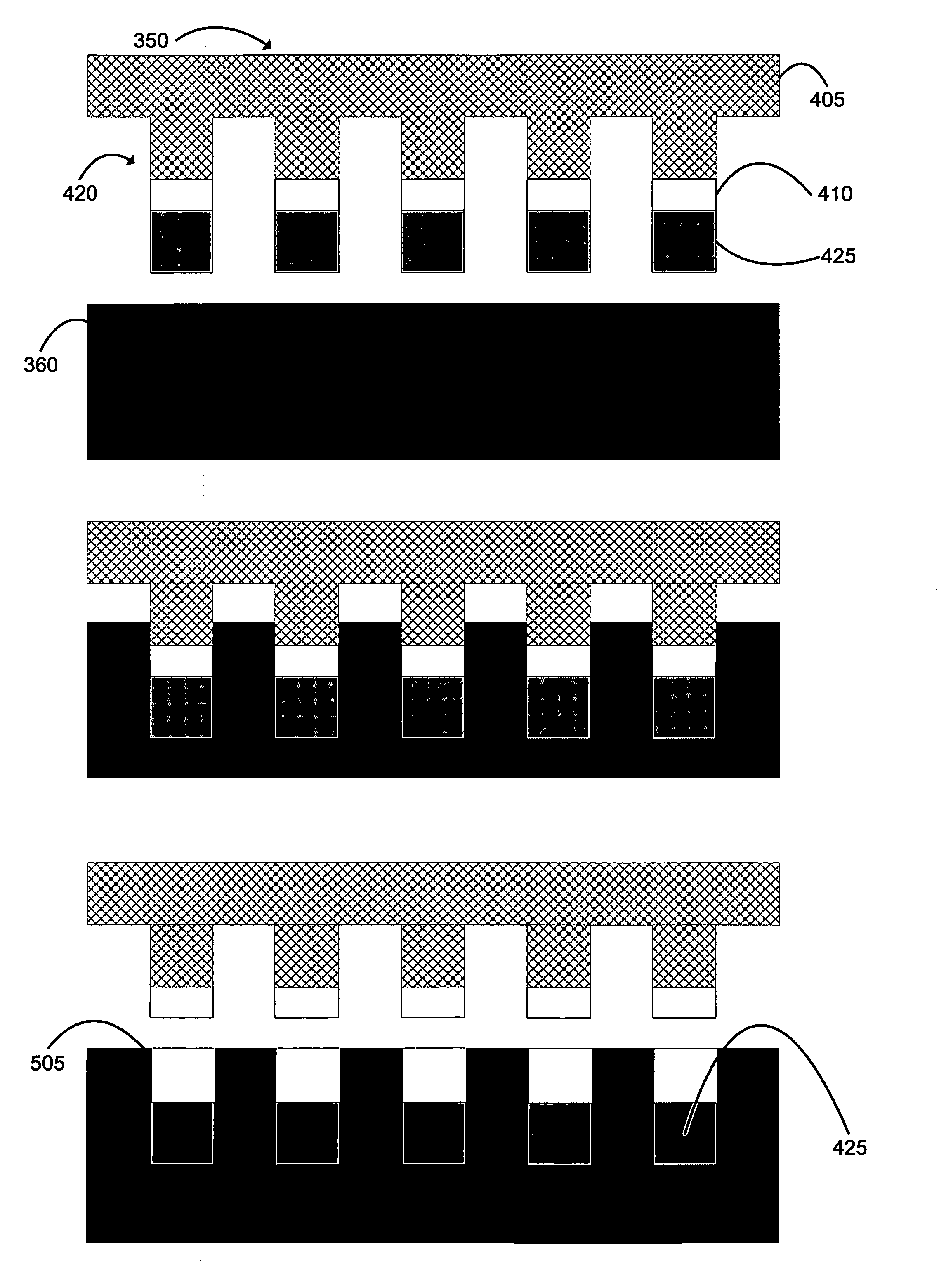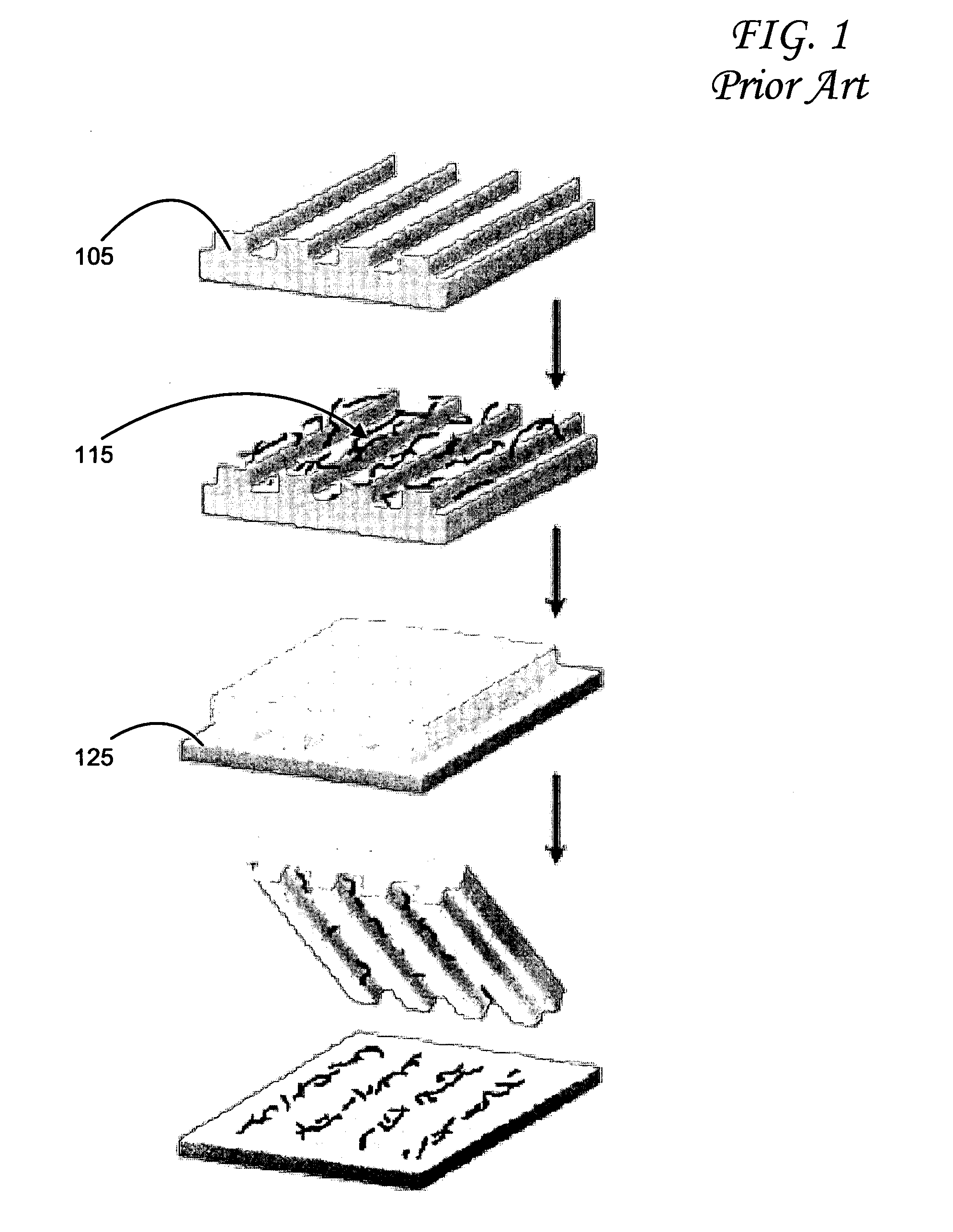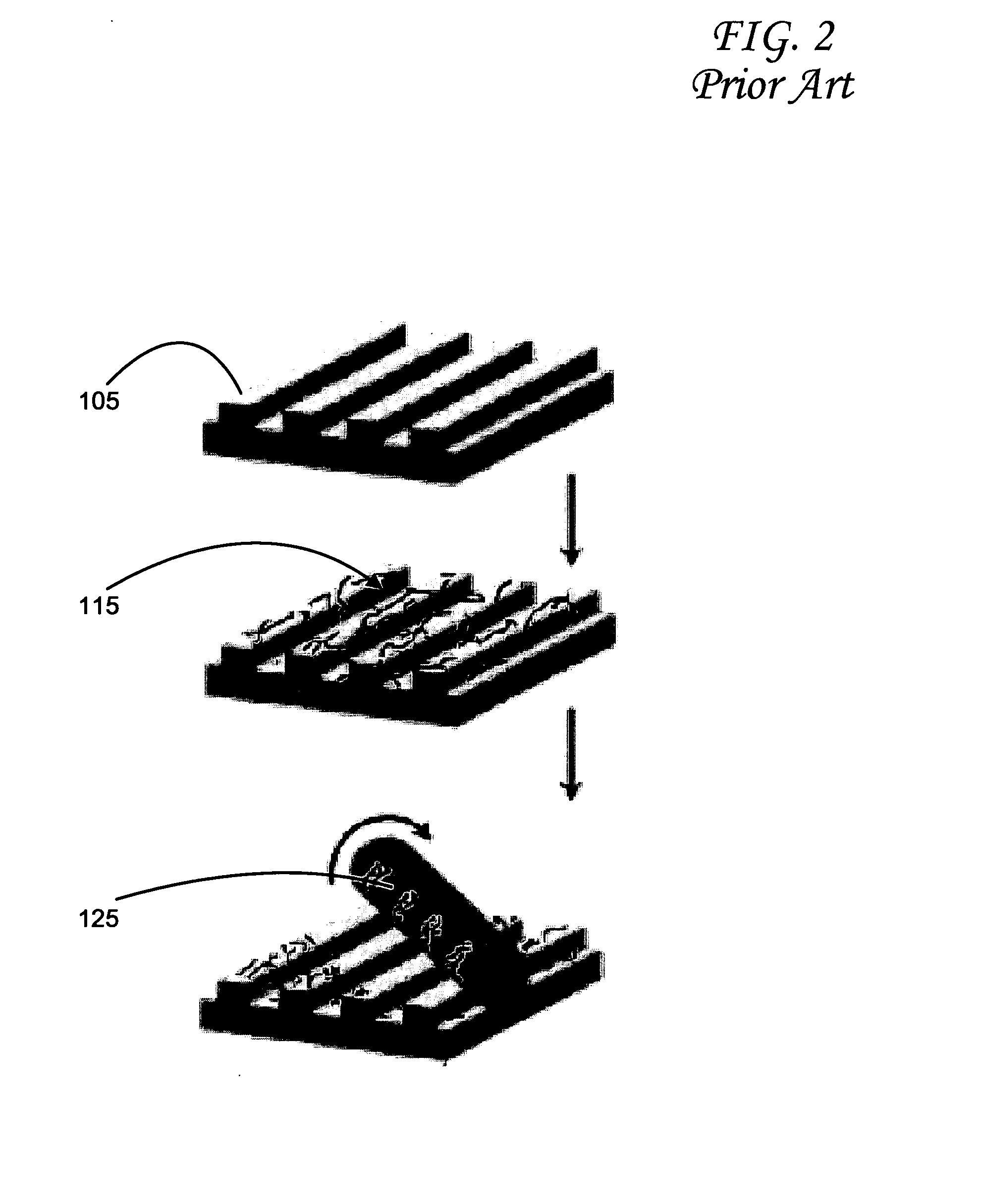Systems and methods for nanomaterial transfer
a technology of nanomaterials and nanomaterials, applied in the field of nanomaterials, can solve the problems of increasing complexity of these devices, difficult or impossible to directly process on or with materials, and equally challenging discoveries, etc., and achieve the effect of high compatibility and efficient operation
- Summary
- Abstract
- Description
- Claims
- Application Information
AI Technical Summary
Problems solved by technology
Method used
Image
Examples
Embodiment Construction
[0054]To facilitate an understanding of the principles and features of the invention, it is explained hereinafter with reference to its implementation in illustrative embodiments. In particular, the present invention is directed toward systems and methods for nanomaterial transfer.
[0055]Referring now to the figures, wherein like reference numerals represent like parts throughout the several views, exemplary embodiments of the present invention will be described in detail. Throughout this description, various components may be identified having specific values, these values are provided as exemplary embodiments and should not be limiting of various concepts of the present invention as many comparable sizes and / or values may be implemented.
[0056]FIG. 1 is an illustration of a prior art method of transferring carbon nanotubes to a polymer substrate. The conventional solution-based method illustrated in FIG. 1 utilizes a Polydimethylsiloxane (PDMS) applicator 105. PDMS is a widely used ...
PUM
| Property | Measurement | Unit |
|---|---|---|
| diameter | aaaaa | aaaaa |
| tensile strength | aaaaa | aaaaa |
| tensile strength | aaaaa | aaaaa |
Abstract
Description
Claims
Application Information
 Login to View More
Login to View More - R&D
- Intellectual Property
- Life Sciences
- Materials
- Tech Scout
- Unparalleled Data Quality
- Higher Quality Content
- 60% Fewer Hallucinations
Browse by: Latest US Patents, China's latest patents, Technical Efficacy Thesaurus, Application Domain, Technology Topic, Popular Technical Reports.
© 2025 PatSnap. All rights reserved.Legal|Privacy policy|Modern Slavery Act Transparency Statement|Sitemap|About US| Contact US: help@patsnap.com



